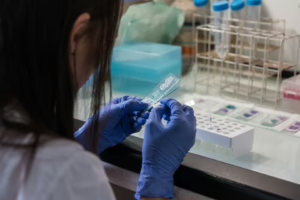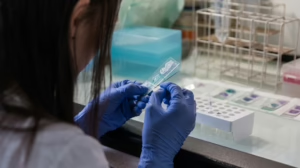Innovative Assessment: The Future of Math Testing
Introduction
As we progress deeper into the 21st century, the landscape of education is rapidly evolving. One of the most significant areas of change is in the assessment methods used to evaluate student understanding and skills, particularly in subjects like mathematics. Traditional assessment methods such as standardized tests and paper-based exams have long been criticized for their inability to accurately gauge a student’s understanding or potential. In this article, we will explore innovative assessment methods that are reshaping math testing and enhancing student learning outcomes.
The Limitations of Traditional Assessments
Traditional math testing typically focuses on rote memorization and problem-solving under time constraints. Critics argue that these approaches predominantly assess a student’s ability to recall formulas and apply them in standardized formats, rather than fostering deep understanding or practical application of mathematical concepts[^1].
1.1. Rote Learning vs. Deep Understanding
Rote learning emphasizes memorization facts and procedures without understanding the underlying concepts. This method can lead to a superficial understanding of mathematics, where students can pass exams but struggle to apply their knowledge in real-world situations[^2]. Moreover, the pressure of standardized tests often leads to student anxiety, further hindering performance.
1.2. Limited Scope of Assessment Methods
Standardized tests primarily assess a narrow range of mathematical skills, often excluding critical thinking, creativity, and collaboration. These tests fail to incorporate real-world problem-solving scenarios that students might encounter outside the classroom[^3]. As a result, educators are increasingly seeking alternatives that offer a more comprehensive evaluation of student learning.
The Shift Toward Innovative Assessments
Innovative assessment methods are emerging as compelling alternatives to traditional practices. These assessments not only evaluate mathematical skills but also support and enhance learning experiences. By combining technology with creative pedagogical approaches, educators are redefining what it means to be "assessed" in mathematics.
2.1. Performance-Based Assessments
Performance-based assessments require students to demonstrate their understanding through hands-on tasks or projects rather than multiple-choice questions. These assessments can take various forms, including:
- Project-Based Learning: Students tackle real-world problems that require mathematical reasoning and problem-solving, culminating in a presentation or report[^4].
- Portfolios: A compilation of students’ work over time, showcasing their growth and understanding of mathematical concepts[^5].
Such assessments encourage critical thinking and creativity while providing a more holistic view of a student’s abilities.
2.2. Formative Assessments
Formative assessments are ongoing evaluations designed to provide feedback and guide instruction. They help teachers identify students’ strengths and weaknesses in real-time, allowing for timely interventions[^6]. Examples include:
- Quizzes and Exit Tickets: Brief assessments conducted at the end of a lesson to evaluate understanding.
- Peer Assessment: Students evaluate each other’s work, fostering collaborative learning and critical thinking[^7].
By emphasizing feedback over grades, formative assessments create a supportive learning environment where students can continually improve.
2.3. Digital Assessments
The integration of technology into assessment practices has transformed the landscape of math education. Digital assessments encompass various tools and platforms that streamline the testing process:
- Online Quizzes and Simulations: Interactive platforms that provide immediate feedback on student performance[^8].
- Adaptive Learning Programs: Software that adjusts the difficulty of math problems based on individual student performance, ensuring a personalized learning experience[^9].
Digital assessments can facilitate data collection and analysis, enabling educators to make informed decisions about instruction and curriculum.
Innovative Tools and Approaches in Math Assessment
New tools and approaches are continuously being developed to enhance the landscape of math assessment. This section will delve into various innovative strategies that educators can employ.
3.1. Game-Based Learning
Game-based learning combines education with entertainment, allowing students to learn mathematical concepts in an engaging context. Games encourage exploration, experimentation, and collaboration among students[^10].
- Mathematical Video Games: Titles that incorporate math problems into their gameplay mechanics, enabling students to practice skills in a fun and interactive setting[^11].
- Math Competitions: Events where students work collaboratively or individually on challenging math problems, promoting a sense of community and motivation.
3.2. Blended Learning Models
Blended learning models integrate traditional face-to-face instruction with online components, allowing for a more flexible and personalized approach to math assessment[^12]. By leveraging technology, educators can provide diverse materials that cater to different learning styles.
- Flipped Classrooms: Students learn new content at home through videos or online tutorials and engage in problem-solving activities in class, applying what they’ve learned[^13].
- Online Discussion Forums: Platforms that encourage students to discuss mathematical concepts outside the classroom, fostering collaboration and a deeper understanding of the material.
3.3. Adaptive Assessments
Adaptive assessments offer personalized testing experiences where the questions adapt to a student’s ability level based on their responses. This approach ensures that every student is challenged appropriately and can progress at their own pace[^14]. Key components include:
- Real-Time Assessment Adjustments: As students answer questions, the program assesses their understanding and modifies the difficulty of subsequent questions accordingly[^15].
- Holistic Performance Tracking: These assessments can track students’ progress over time, offering insights into their learning trajectory and areas needing improvement.
Fostering a Growth Mindset Through Assessment
Innovative assessment methods not only enhance the evaluation process but also foster a growth mindset among students. A growth mindset is the belief that abilities can be developed through dedication and hard work[^16]. Here’s how innovative assessments can nurture this mindset:
4.1. Emphasizing Effort Over Results
Innovative assessments often focus on the learning process rather than merely the final grade[^17]. Through formative assessments, feedback, and iterative learning experiences, students see value in their efforts, which encourages resilience and perseverance.
4.2. Reflection and Self-Assessment
Encouraging students to reflect on their learning and self-assess their understanding can empower them to take ownership of their math education[^18]. Tools such as learning journals enable students to track their growth and identify areas for improvement.
4.3. Celebrating Mistakes as Learning Opportunities
In innovative assessments, mistakes are framed as valuable learning experiences. This perspective can reduce test anxiety and promote a supportive learning environment[^19]. When students learn to view challenges as opportunities for growth, their confidence in math improves.
The Role of Teachers in Innovative Assessment
As education moves toward innovative assessment methods, the role of teachers becomes increasingly pivotal. Effective implementation requires educators who are not only skilled in mathematics but also adept in facilitating diverse assessment strategies.
5.1. Professional Development
Ongoing professional development is essential for teachers to stay updated on the latest assessment strategies and technological tools. Schools should prioritize training that focuses on:
- Integrating Technology into Assessment: Offering workshops on using digital platforms effectively.
- Designing Effective Performance-Based Assessments: Educators can collaborate to create meaningful assessments that align with learning objectives[^20].
5.2. Collaboration with Colleagues
Collaborative approaches allow teachers to share best practices and insights regarding innovative assessments. Professional learning communities can focus on developing and refining assessment strategies that cater to diverse student needs[^21].
5.3. Building Relationships with Students
Teachers play a crucial role in fostering a safe and supportive learning environment that encourages risk-taking and open communication. Building strong relationships with students allows educators to better understand their needs and tailor assessments accordingly[^22].
Conclusion
The future of math testing lies in innovative assessment methods that prioritize holistic understanding and real-world application. Traditional methods have their limitations, but by embracing new strategies such as performance-based assessments, digital technologies, and adaptive learning, educators can create a more effective and engaging learning environment.
Furthermore, fostering a growth mindset through assessment practices will enable students to navigate challenges in math with confidence and resilience. As we continue to navigate the evolving world of education, it is crucial that teachers, administrators, and policymakers work collaboratively to implement innovative assessment strategies that promote deeper learning and student success.
In conclusion, innovative assessments represent a fundamental shift in the way we evaluate mathematics learning. They prioritize not only what students know but also how they apply their knowledge in various contexts. As we look towards the future, embracing these changes will be essential in preparing students for a complex, rapidly changing world.


























Add Comment